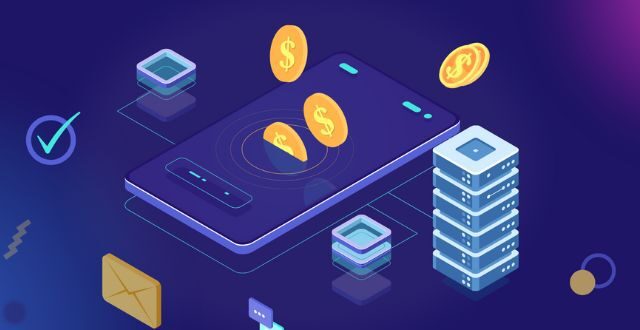When you think about monetizing software, envision yourself as a chef. Your software is a unique dish that you’ve poured your heart into creating. Now, it’s time to open your restaurant’s doors and invite customers to taste—and pay for—your culinary masterpiece.
But here’s the catch: just like diners have different tastes, software users have different needs and budgets. Monetizing software is about finding the right customers, serving them the perfect dish, and ensuring they come back for seconds.
Recommendation: Start by clearly defining what your software offers and who it’s for. Create user personas to better understand your audience and tailor your monetization strategy to their preferences.
Understanding Your Audience
Your audience is the lifeblood of your software’s success. To effectively monetize, you must listen to their heartbeat. Dive deep into forums, social media, and customer surveys to hear their needs, pains, and desires. This information is like the secret ingredient that can make your software stand out in a crowded marketplace.
How to: Use analytics tools to gather data on your audience’s behavior. Engage with them on social media to gain insights into their preferences and use that information to guide your development and marketing efforts.
Choosing the Right Sales Model
Selecting a sales model is akin to choosing a game plan in sports. Do you aim for steady income with a subscription model, or swing for the fences with a high-value one-time purchase? There’s also freemium, which offers a basic version for free and charges for premium features.
How to: Evaluate your software’s usage patterns and consider your long-term revenue goals. A/B testing different models can provide insights into what resonates best with your users.
Pricing Your Software Right
Pricing can be as tricky as walking a tightrope. Balance is essential; too high and you risk losing potential customers, too low and you may not cover costs or reflect the true value of your software.
Conduct market research, understand your costs, and consider value-based pricing where the price reflects the perceived value to the customer.
After establishing your price point, you might want to collaborate with an established e-commerce solutions provider to streamline the sale and distribution of your software.
How to: Look at competitors and align your prices, ensuring you clearly communicate the value that justifies your price point. Consider offering tiered pricing to cater to different segments of your audience.
Enhancing Value with Add-Ons
Like choosing toppings on a pizza, customers love the ability to customize their purchase with add-ons. These can be additional features, support plans, or integrations with other tools. They provide an avenue for customers to get exactly what they want and for you to increase your average transaction size.
Recommendation: Identify add-ons that complement your core offering and are attractive to your customer base. Ensure they add real value and aren’t just fluff.
The Role of Marketing
Marketing is your megaphone. It amplifies your message to reach a wider audience. Invest in a solid content marketing strategy that educates and engages potential customers. SEO, email marketing, and social media advertising can all play a role in getting your software the attention it deserves.
How to: Create valuable content that solves user problems or educates them about your niche. Use keywords that your potential customers are searching for to improve your visibility in search engines.
Selling Through Multiple Channels
Don’t limit yourself to a single storefront. Online marketplaces, affiliate marketing, and resellers can expand your reach. Think of it as having multiple fishing lines in the water, increasing your chances of a catch.
How to: Research and partner with platforms that cater to your target audience. Implement an affiliate program to incentivize others to sell your software.
Leveraging Customer Feedback
Customer feedback is the compass that guides your product development. It can lead to innovation and improvements that resonate with your user base and attract new customers. It’s essential for customer retention and can transform a good product into a great one.
Recommendation: Actively seek out feedback through surveys, user testing, and direct communication. Implement a system to analyze and act on the feedback collected.
Updates and Upgrades: A Revenue Stream
Regular updates and upgrades keep your software fresh and relevant. They are also opportunities to re-engage with past customers and offer them new value. It’s a way to maintain a relationship with your customer base and to remind them why they chose your software in the first place.
How to: Develop a roadmap for your software that includes regular updates. Communicate upcoming features to your user base to build anticipation and demonstrate ongoing value.
Mastering the Art of Licensing
Licensing is about setting the ground rules for how your software can be used. It can be a significant revenue stream, especially for B2B software. Licenses can be per user, per device, or based on usage metrics, and can be tailored to the needs of different customer segments.
How to: Understand the legal aspects of software licensing and create clear, enforceable terms. Consider flexible licensing options to accommodate different user needs.
Partnerships and Collaborations
Collaborating with other businesses can open new doors. Whether it’s through integrating with other software or forming marketing partnerships, these relationships can introduce your software to new audiences and add value to existing customers.
Recommendation: Look for companies with complementary products and values. Aim for partnerships that offer mutual benefits and have clear terms.
The Power of Customer Support
Exceptional customer support can be a competitive advantage. It turns customers into advocates and can influence purchasing decisions. Support can range from help desks to community forums and one-on-one assistance.
How to: Invest in training your support staff and provide them with the tools they need to succeed. Monitor support interactions to identify areas for improvement and opportunities to delight customers.
Software Security as a Selling Point
In today’s digital landscape, security is not just necessary—it’s a selling point. Customers want to know their data is safe. Make sure your software meets industry standards and communicate this to your customers.
How to: Regularly update your security protocols and be transparent about your security features. Use certifications and endorsements to build trust.
The Future of Software Sales
The future is about adaptation and innovation. Stay informed about new technologies, changing customer behaviors, and emerging business models. Keep an eye on the horizon and be ready to pivot or evolve your strategies to meet the future head-on.
Recommendation: Stay active in your industry’s community, attend conferences, and participate in webinars. This will keep you informed about the latest trends and best practices in software sales.
Conclusion
Monetizing software is an ongoing process of learning, adapting, and refining. It’s about understanding your value proposition, knowing your audience, and delivering exceptional experiences. As the digital world evolves, so too will the strategies for monetizing software. Keep your ear to the ground, listen to your customers, and never stop improving.
FAQs about Monetizing Software Sales
What’s the most profitable software sales model?
The profitability of a sales model depends on your product and market. Subscription models offer recurring revenue, while high-value one-time purchases can attract a different customer segment. Analyze your customer’s usage and preferences to determine the best approach.
How can I determine the right price for my software?
Conduct market research, understand your production costs, and consider value-based pricing. Also, perform A/B testing to see which price points resonate best with your target audience.
Is customer support really that important in software sales?
Yes, excellent customer support can lead to higher customer satisfaction, driving positive reviews and referrals which are invaluable for sales.
Can I sell my software internationally?
Yes, international sales can expand your market reach significantly. However, ensure that you comply with local regulations, currency conversions, and language localization.
How often should I update or upgrade my software?
This varies widely depending on the type of software and user expectations. However, regular updates can keep your software secure and functional, while major upgrades can bring new life and revenue opportunities.
 khamush.com Lifestyle | Motivation | Poems
khamush.com Lifestyle | Motivation | Poems



